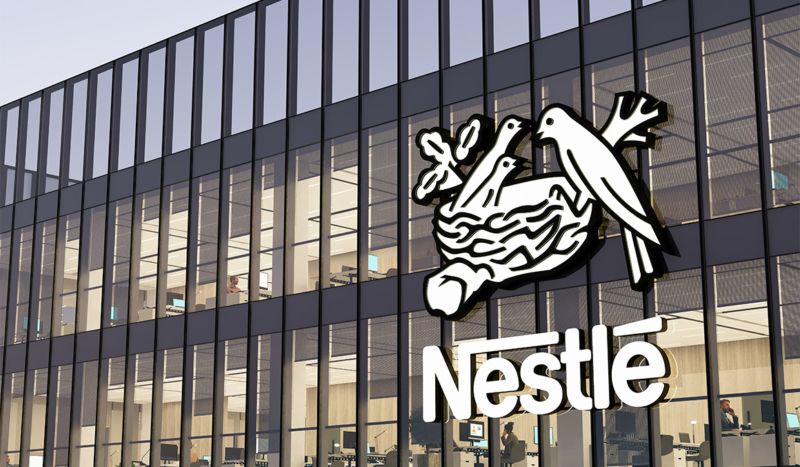
Askar / stock.adobe.com
Additional food companies have announced plans to eliminate artificial food colors in the products they sell to their US customers, a move in keeping with the Trump administration’s Make America Healthy Again (MAHA) effort to curb harmful ingredients in Americans’ diets.
>> Here are the major food companies removing harmful ingredients amid RFK’s MAHA push <<
Last week, both Nestlé USA and Conagra Brands released press statements about plans to eliminate petroleum-based food dyes from their US food products.
As Health and Human Services (HHS) Secretary Robert F. Kennedy, Jr. observed in April, food industry giants have been selling their products containing artificial dyes within the United States while offering safer versions of the same products to other countries.
In a press statement Wednesday, Nestlé USA announced it was releasing its “timeline to fully eliminate FD&C colors in its U.S. food and beverage portfolio by mid-2026.”
“Over the last decade, the company has been actively removing synthetic colors from its products and working to identify alternative solutions in recipes where they are still used,” Nestlé said. “The work is scheduled to be completed within the next 12 months.”
Nestlé USA CEO Marty Thompson said in a statement that consumers are looking for a “highly personal” vision of “choice and value” in their food products. Thompson also said that as customers’ “preferences and nutritional needs evolve, we evolve with them.”
Also on Wednesday, Conagra Brands announced that it will complete “the removal of certified Food, Drug & Cosmetic colors (“FD&C colors”) from its U.S. frozen product portfolio by the end of 2025.”
“This milestone represents yet another important achievement in Conagra’s multi-year journey to innovate and modernize products to meet evolving consumer trends,” the company said.
Tom McGough, the company’s executive vice president and chief operating officer, also said that Conagra Brands’ “transition away from FD&C colors is just one aspect of our broader strategy to modernize our portfolio to align with consumer preferences.”
“Our leading portfolio of frozen brands, including Birds Eye, Healthy Choice, Marie Callender’s and more, will be 100% free from FD&C colors by the end of 2025.”
Conagra said it also plans to continue its “modernization efforts across its full US retail portfolio and will not offer products with FD&C colors sold to K-12 schools by the beginning of the 2026-2027 school year.”
“The company is also working to discontinue the use of FD&C colors in the manufacturing of products across its U.S. retail portfolio by the end of 2027,” the statement said.
J.M. Smucker Co. announced June 26 its “commitment to remove FD&C colors from all consumer food products” by the end of 2027.
The company said its decision “will impact its sugar-free fruit-spreads and ice cream toppings” as well as some products from its Hostess line. Smucker also plans to remove the petroleum-based dyes from products sold to K-12 schools.
As reported by Reuters, Bloomberg News noted on Monday Hershey’s plan to remove synthetic dyes from its US products by the end of 2027, though the chocolate giant has no press statement about its intentions to date.
“Removing these colors is a natural next step in our program to ensure consumers have options to fit their lifestyle while maintaining trust and confidence in our products,” Hershey’s spokesperson said in a reported statement to Bloomberg.
On June 17, General Mills announced its plans to remove petroleum-based dyes from all its US cereals and all K-12 foods by the summer of next year.
General Mills chairman and CEO Jeff Harmening said in a statement that, currently, “the vast majority of our foods are made without certified colors and we’re working to ensure that will soon apply to our full portfolio.”
Upon the announcement of the new rules and timeline, Kennedy said America’s children have been living for the past 50 years in “a toxic soup of synthetic chemicals,” leading to chronic health conditions such as attention deficit hyperactivity disorder (ADHD), obesity, diabetes, cancer, gastrointestinal issues, and allergies.
A study published in 2023 at the National Library of Medicine, for example, noted that “[t]he increase in the use of synthetic food colors in such foods over the past 40 years, including the common synthetic food dye Allura Red AC (Red 40), coincides with the rise of early-onset colorectal cancer (EOCRC).”
Researchers found that “Red 40 damages DNA both in vitro and in vivo and that consumption of Red 40 in the presence of a high-fat diet for 10 months leads to dysbiosis and low-grade colonic inflammation in mice.”
The FDA is working with the food industry to eliminate FD&C Green No. 3, FD&C Red No. 40, FD&C Yellow No. 5, FD&C Yellow No. 6, FD&C Blue No. 1 and FD&C Blue No. 2 from the food supply by the end of 2026.
Additionally, the FDA will be asking food companies to remove FD&C Red No. 3 from the food supply earlier than the previously required 2027-2028 deadline.
